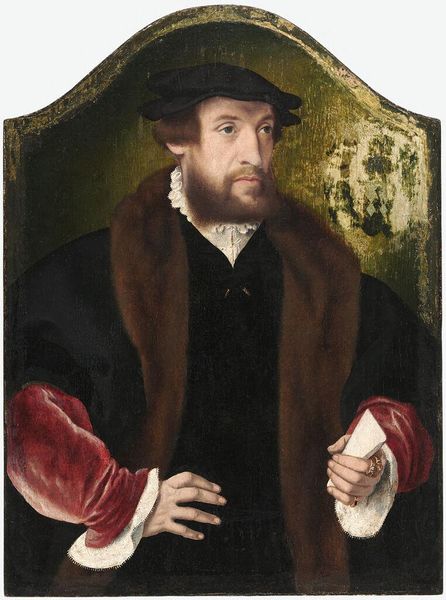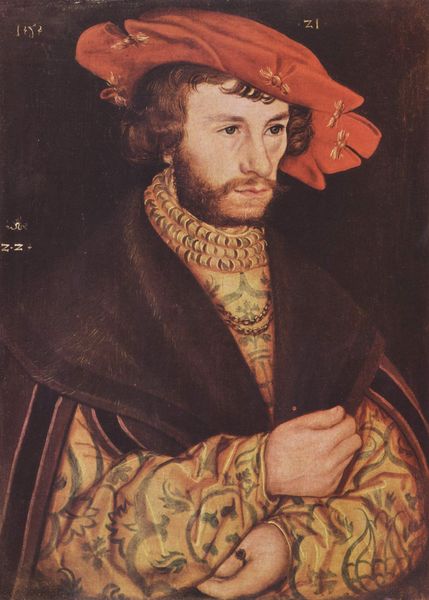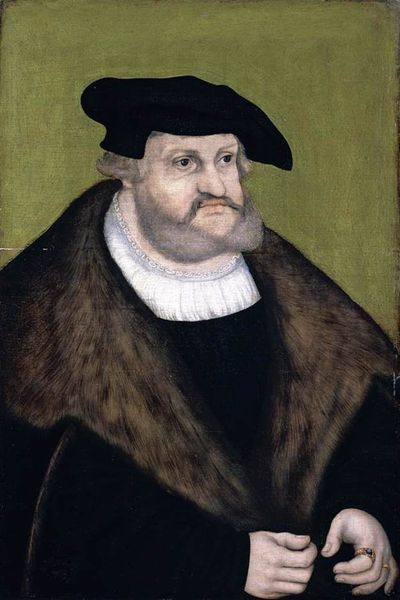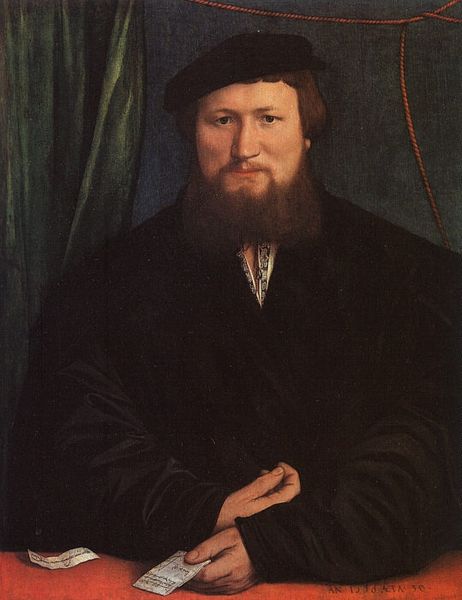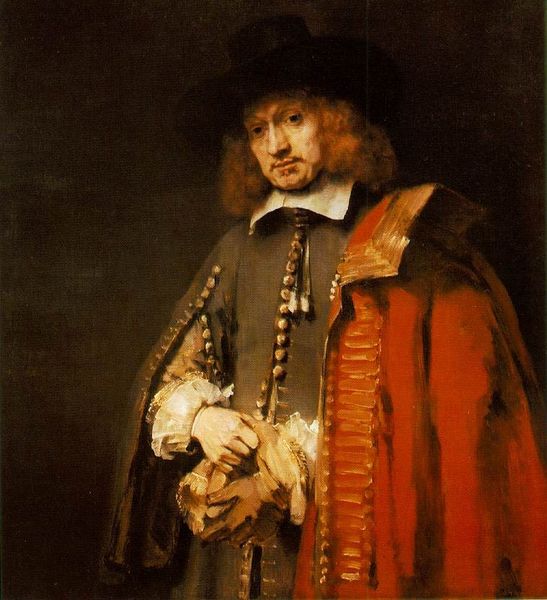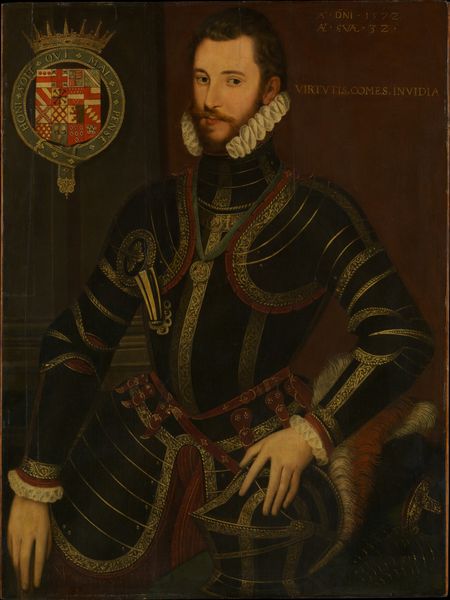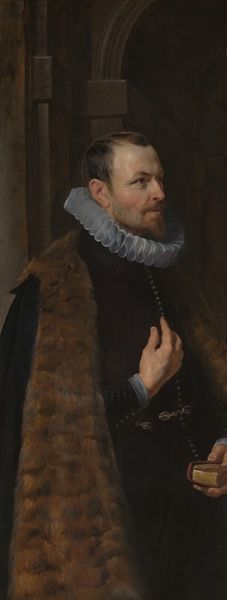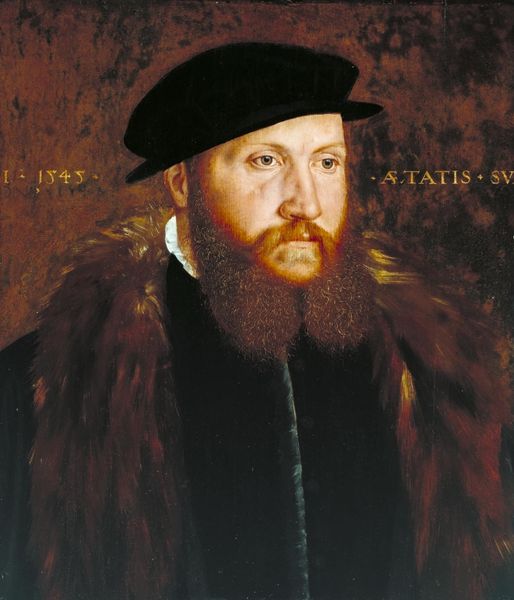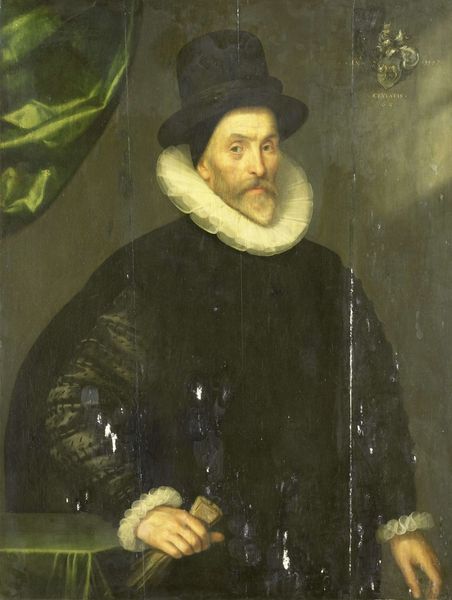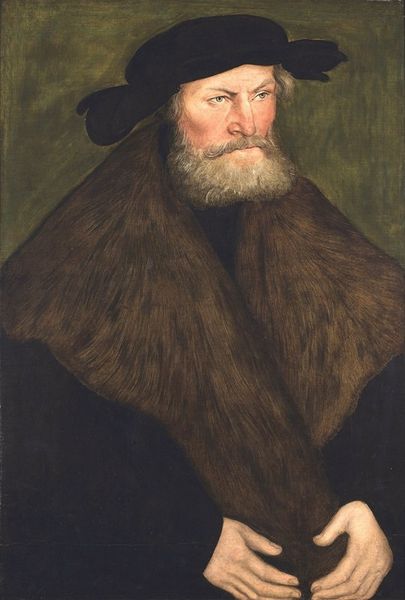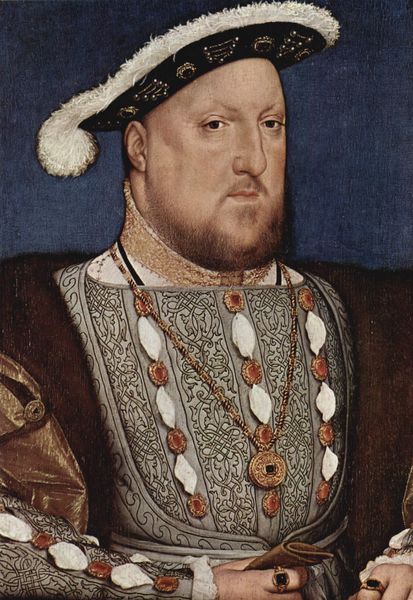
painting, oil-paint
#
portrait
#
figurative
#
portrait
#
painting
#
oil-paint
#
figuration
#
11_renaissance
#
history-painting
#
northern-renaissance
Copyright: Public Domain: Artvee
Curator: Here we have "Portrait of Moritz Buchner" by Lucas Cranach the Elder, painted around 1520. It's an oil painting capturing a man of obvious stature in the Northern Renaissance style. Editor: My first impression is one of guarded power. The fur collar and that weighty signet ring speak of wealth and status, but the set jaw suggests he's used to defending it. Curator: Indeed. That ring is almost certainly a marker of family or guild affiliation, and a signal of belonging. We often see these attributes communicated with clothing. Red, particularly, possessed associations with status. Editor: It also signifies a degree of... bloodthirstiness, doesn’t it? The color has undeniable connections to violence, ambition. I’m curious about what political landscapes Moritz Buchner inhabited, and how the portrait might reflect these contexts. Curator: Cranach was quite adept at capturing likeness and projecting status. Think about the Protestant Reformation brewing at that time. To have oneself immortalized in this manner was a statement of earthly power, even as religious upheavals questioned such displays. Note the slight asymmetry, and how he averts direct eye contact. Editor: The averted gaze is interesting. There’s a calculated defiance, or perhaps a hint of unease, underlying the overt display of power. What kind of role do you think the historical context played in defining the work and defining who the sitter wished to appear to be? Curator: A major one. While adhering to established symbolic visual cues—the fur, the clothing, the ring— the positioning of the body in relation to the viewer indicates evolving secular ideals. There’s both assertion of established nobility and the nascent humanist individual beginning to break through. Editor: It's interesting how an image can project stability when things were so destabilized. And to consider this as a carefully composed assertion, a crafted defense against shifting tides… that’s compelling. It certainly deepens my understanding of the historical moment, and what might be called “masculinity” at the time. Curator: I agree. Cranach's piece gives tangible form to the social and personal balancing acts being played in that era of transformation. I hope people take some time and come to their own judgements about this image. Editor: Yes, there's something quite haunting about glimpsing those complex power dynamics distilled into paint.
Comments
No comments
Be the first to comment and join the conversation on the ultimate creative platform.
